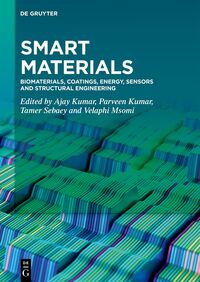
Smart materials have garnered significant attention in recent years due to their unique properties and promising applications across various industries. Properties are altered in a controlled fashion by external or internal stimuli such as temperature, stress, pressure, pH, electric or magnetic fields and moistures. Smart materials are also called intelligent materials because of their intellectual behavior due to change in environmental conditions. The key features of intellectual behavior include the capabilities to retain original state once stimulus has been removed. Smart properties such as self-sensing, self-healing, memory capabilities, self-adaptivity, self-diagnostics, self-actuating allow new applications in mechanical, electronics, medical, healthcare, aerospace, aviation, automobile and environmental engineering. The book captures the recent innovative breakthroughs in smart materials, experimental and computational analysis, hybrid processing techniques, and the latest developments in the applications of smart materials. It covers fundamentals, artificial intelligence, digital twin, and internet of things for the design and development of novel features and describes processing, testing, optimization, modeling, simulation, and characterization techniques. This book will help readers understand shape-memory alloys, shape-memory polymers, piezoelectric materials, electrochromic materials, thermoelectric materials, and magneto-restrictive materials.